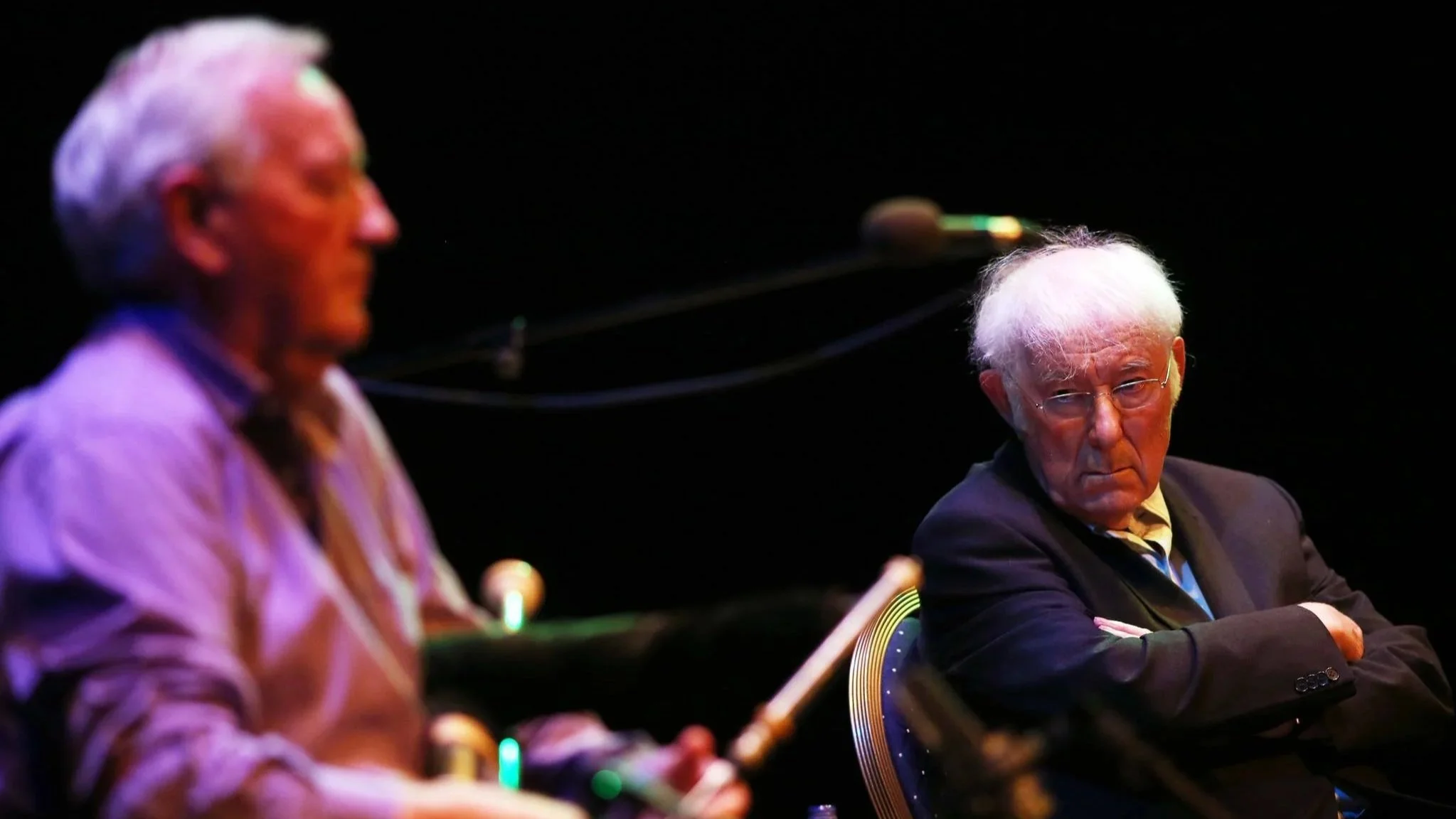Fleadh Cheoil na hÉireann 2013
In 2013, as part of Derry’s year as UK City of Culture, during his time working for Cultúrlann Uí Chanáin, Wildtune director Oran Mullan was central to the event programming of the first-ever Fleadh Cheoil na hÉireann (Ireland’s largest traditional music festival) to be held in the North of Ireland — marking a historic moment in the festival’s 62-year history. The festival drew over 430,000 visitors and more than 20,000 musicians and dancers over approximately a week—making it the largest Fleadh ever. Its scale revitalised city-wide confidence: the event generated around £40 million for the regional economy, boosted hotel occupancy by 32%, and supported roughly 1,000 full and short-term jobs. Press praised the event as a ‘phenomenal success’ and ‘a city transformed,’ with coverage across Irish and UK media celebrating both its scale and its emotional and cultural resonance.
Headline Events
The Poet and the Piper
Seamus Heaney’s final major public appearance, revisiting The Poet and the Piper with Liam Ó Flynn — a poignant and unforgettable highlight.
Cara Dillon & the Orchestra of Ireland
A critically acclaimed homecoming concert for internationally-renowned local Derry singer Cara Dillon, accompanied the Orchestra of Ireland.
Transatlantic Fleadh
A unique collaboration with the celebrated Transatlantic Sessions TV and concert series — in their first visit to Ireland.
Fleadh Live
A Landmark in Festival Broadcasting
One of the defining innovations of Derry’s 2013 Fleadh Cheoil was the creation of Fleadh Live, a groundbreaking live television project that brought the atmosphere, colour, and sound of the festival into homes across Ireland and beyond. Working in partnership with TG4 and production company Gifted Live, Oran and the Fleadh team enabled 18 hours of live broadcast across five days of the festival, capturing the Fleadh’s most electrifying performances, intimate sessions, and street celebrations. Inspired by the style of BBC’s Glastonbury coverage, Fleadh Live moved fluidly between multiple performance stages, pop-up street gigs, interviews with artists, and behind-the-scenes glimpses—offering viewers a true sense of being at the heart of the festival.
This was the first time in Fleadh history that national television audiences could experience the event in real time, and it represented a major technical and creative achievement for the city. The result was widely celebrated—drawing praise for both the quality of the programming and the way it showcased Derry’s warmth and energy. For musicians, Fleadh Live provided an unprecedented platform to reach new audiences; for viewers, it offered a living, breathing window into a historic cultural moment.
An Ré Nua
Nurturing the Next Generation of Traditional Musicians
In parallel with the Fleadh in 2013, Oran organised An Ré Nua, a talent competition specifically designed to spotlight emerging Irish traditional musicians. The project was created to give young performers their first professional platform, combining mentorship, performance experience, and national media exposure. The competition culminated in a high-profile concert broadcast on BBC Radio Ulster, reaching audiences across the country and further afield. It featured a selection of the most promising young musicians of the time, many performing in public for the first time. The programme introduced a wave of new talent who have since become major figures in the Irish traditional music scene, including Niall Murphy, Niall Hanna, Cúig, Síoda, Jack Warnock, among others.
An Ré Nua was more than a competition—it was a creative incubator. Participants received guidance from established musicians, exposure to live broadcast standards, and experience navigating the dynamics of performing in a high-profile festival environment. The project demonstrated how thoughtful curation and support can help nurture the next generation of Irish traditional music stars, ensuring the sustainability and evolution of the tradition. The success of An Re Nua was widely acknowledged, with both audiences and media recognising the fresh energy and innovation these young musicians brought to the festival. Many have since gone on to release recordings, tour internationally, and win acclaim for their contributions to the living tradition of Irish music.

























